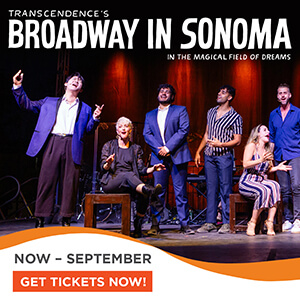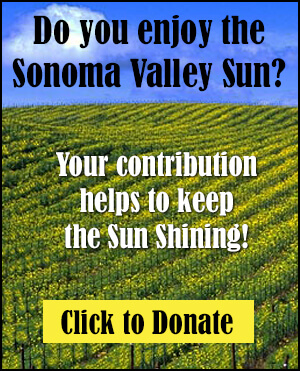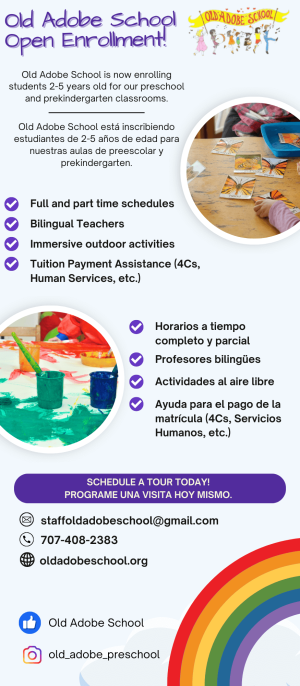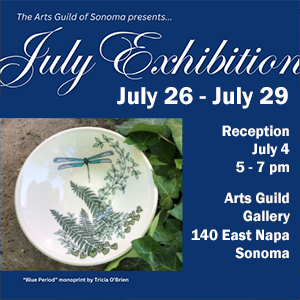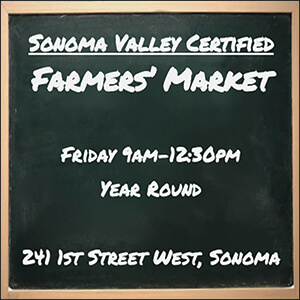
Under the Sun: Patricia Cullinan, historian
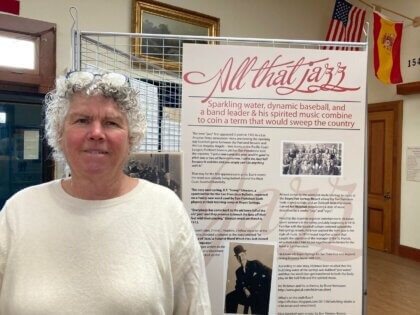
The president of the Sonoma Valley Historical Society talks with the Sun’s Anna Pier about her background, and why history matters.
You’re a Sonoma native.
Yes, first generation one. My Irish father came to Sonoma just prior to WWII from Borneo, where he worked for Dutch East India Shell. My parents and uncle bought a ranch on Hwy 37 where they raised cattle and hay. That’s now returned to wetlands and flyway. My maternal grandparents came to Healdsburg from northern Italy. My grandmother, who raised tuberous begonias, was a friend of Luther Burbank. Burbank planted my grandparents’ ranch – prunes and apples. I used to work there in summers. All my family has been in agriculture. I’m a horticulturist, and I’ve always worked in agriculture. In the ’70s I was part of planting the first modern vineyard on Dr. Flynn’s ranch, now Benziger. I’ve served for years on the County Landmarks Commission.
Work other than volunteer?
I’m a general engineering contractor. I’ve done historic preservation construction for state and local municipalities. Also landscape design restoration for State Parks. Example? La Purisima in Lompoc. I’m currently consulting for historic landscapes.
History was important to you growing up.
People in Sonoma had a sense and knowledge of their history. History was really important to the community’s sense of identity. History provides people with an understanding of how we got here. The skills people brought, and the ones they developed. Everybody’s got a history.
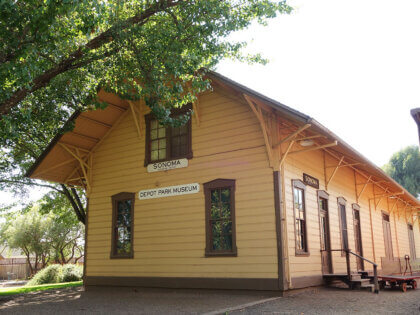
And now, you oversee the SVHS, which also operates the Depot Museum.
I am the board president, and we board members plus others all help with the projects. We are a nonprofit, all-volunteer organization except for our part time Collections Manager, Lorrie at the Marcy House Archives and Research Center. The Museum is constantly collecting. The State Librarian is brilliant, realizing that small historical societies are preserving much of the written history of California. But it’s vulnerable – here we almost burned down. The State Library makes small grants, through California Revealed, to make sure this material is digitized. It is available on their website and the Internet Archive.
It’s Women’s History Month. Have you ever had an exhibit on women?
Yes, we have had several in the past including most recently the Sonoma Valley Women’s Club exhibit.
How do the exhibits come to be?
We have a committee that decides and different people create the exhibits. Among others, Kate Schertz, with the help of Mike Acker, did most of the baseball exhibit. In addition to the Women’s Club exhibit I mentioned, Tom Whitworth and his wife did the train exhibit panels that will go up soon, and the current exhibit on Resorts. Mike Acker, with our team, did the recent exhibit on the history of the Springs.
Exhibit you would like to have?
It’s a long list. This year I hope to have an exhibit on the military in our area — Skaggs and Mare Island and the shipyards of WWII in Napa.
You say that in general people think about history the way they think about math – as dry, difficult, boring. How can you get people past that?
History is messy and it’s colorful. It’s only boring and dry if it becomes white-washed. Telling a story helps to bring it to life, but it is crucial to tell the facts, warts and all; otherwise it’s just a “story.” One of the ways the Historical Society does this is by using social media, because it engages a wide audience with pictures and factual content in an easily absorbed amount.
Why does local history matter?
Local history matters because it is what shapes us – it’s what makes us who we are! Visitors in the 19th century came to “take the waters” and relax in the scenic country-side. Hotels and resorts from Wingo to Kenwood had gardens, and advertised their fresh, abundant meals. We were “farm-to-table” before that was a thing. From a contemporary perspective, the “wine-country lifestyle” began with the Mission vineyards. The first private vineyard in Sonoma was planted in 1832 by an indigenous viticulturist on a land grant from the Mission. It’s the present-day site of Bartholomew Winery. The Mission, of course, has always been an attraction to tourists, and despite the negative aspects of its history, has shaped the architecture and landscapes of the Valley.
The Valley as a tourist attraction is about more than wine.
The resorts brought visitors who needed things to do in their leisure-time, so baseball, boxing, horse-racing, hunting, and fishing all prospered here, along with all of the businesses needed to support them. Music, dancing, and theater were all popular past-times, and Sonoma has a legacy of arts that continues to this day. Sailing ships in the 19th century usually had a scientific team aboard, studying people, places, and plants. That’s how a French photographer named Cloris, arriving on probably a Russian ship, came to take those amazing pictures of local indigenous people. They are the only pictures we have of Coast Miwok then. The Sonoma Valley Historical Society tells all of these stories, and more.
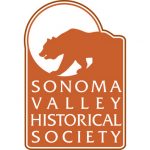
Who hears these stories?
Locals and visitors alike come to our Depot Park Museum to learn about what the Valley of the Moon was like, how it grew, and the people who made it what it is. They’re what taking part in what the National Trust calls “heritage tourism” – traveling to experience the places, artifacts, and activities that authentically represent the stories and people of the past and present. The key word here is “authentically.” We tell the authentic story of our history. As well, many people visit or contact us because either they, or their ancestors were from here, and they want to know the backgrounds and events surrounding their lives.
Any last thoughts for our readers?
I want to be sure to say I am very passionate about historic preservation as an important part of history. Buildings are the tangible link to the past. And I want to say I feel lucky to have grown up here, in a diverse community that included immigrants, like my family, from a variety of countries. To be able to access all of that history here, and see it brought to life at the museum, on social media, in our school classrooms, through lectures and events, is not just important for me, but for everyone. Local history definitely matters!

